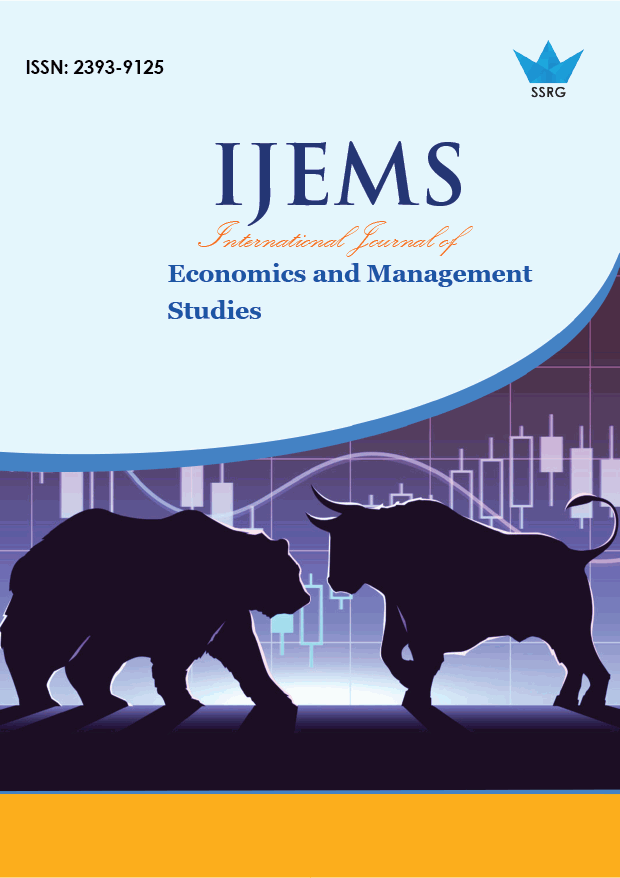A Time Study on Dispatch and Delivery of Material in the Food Processing Sector

| International Journal of Economics and Management Studies |
| © 2020 by SSRG - IJEMS Journal |
| Volume 7 Issue 2 |
| Year of Publication : 2020 |
| Authors : Debaleena Chatterjee, Supriya Pandey |
How to Cite?
Debaleena Chatterjee, Supriya Pandey, "A Time Study on Dispatch and Delivery of Material in the Food Processing Sector," SSRG International Journal of Economics and Management Studies, vol. 7, no. 2, pp. 52-58, 2020. Crossref, https://doi.org/10.14445/23939125/IJEMS-V7I2P108
Abstract:
The modern supply chain principles entail high volume distribution using minimal inventories to be delivered within a short response time. Therefore, this time study intends to identify the areas needing improvement in the bulk packing, loading, and delivery of time-sensitive materials such as raw and semi-processed food material from the manufacturing unit to the restaurants catering to the end consumers. Improving the efficiency of time-sensitive operations is crucial in helping companies gain a competitive advantage. The performance of warehouse operations is quantified in terms of idle time-measurement of the process of dispatch and delivery. Timed data is collected from the Dispatch schedule of the manufacturing unit of semi-processed food materials. Cycle Time is recorded for the completion of each activity, such as bulk picking, segregation, loading, and delivery, so as to measure utilization of each step for idle time calculation. Descriptive statistics are then further used for quality control charts to evaluate the efficiency.
Keywords:
Food, Delivery, Dispatch, Time.
References:
[1] J. Gray, B. Tomlin, and A. Roth., The effect of learning and strategic behavior on manufacturing outsourcing decisions, Working Paper, Kenan-Flagler Business School, University of North Carolina., (2005).
[2] S. Nahmias., Perishable inventory theory: a review, Operations Research 30(4) (1982) 680–708.
[3] S. K. Goyal and B. C. Giri., Recent trends in modeling of deteriorating inventory, European Journal of Operational Research, 134(1) (2001) 1–16.
[4] F. Raafat., Survey of literature on continuously deteriorating inventory models, Journal of the Operational Research Society, 42(1) (1991) 27–37.
[5] J. Blackburn and G. Scudder., Supply chain strategies for perishable products: the case of fresh produce, Production and Operations Management, 18(2) (2009) 129–137.
[6] C. Li and F. Zhang., Advance demand information, price discrimination, and preorder strategies, Manufacturing and Service Operations Management, 15(1) (2013) 57–71.
[7] X. Q. Cai, J. Chen, Y. B. Xiao, and X. L. Xu., Optimization and coordination of fresh product supply chains with freshness keeping effort, Production and Operations Management, 19(3) (2010) 261–278.
[8] Hertz, S., and Alfredsson, M., Strategic development of third-party logistics providers. Industrial Marketing Management, 32 (2003) 139-149.
[9] Selviaridis, K., and Spring, M., Third-party logistics: a literature review and research agenda. The International Journal of Logistics Management, 18 (1) (2007) 125-150.
[10] X. Q. Cai, J. Chen, Y. B. Xiao, X. L. Xu, and G. Yu,(2013). Fresh-product supply chain management with logistics outsourcing, Omega, 41(4) (2013) 752–765.
[11] F. Bruns and S. Knust., Optimized load planning of trains in intermodal transportation, OR Spectrum, 34(3) (2012) 511– 533.
[12] T. S. Chang., Best routes selection in international intermodal networks, Computers and Operations Research, 35(9) (2008) 2877–2891.
[13] M. Verma and V. Verter., A lead-time based approach for planning rail-truck intermodal transportation of dangerous goods, European Journal of Operational Research, 202(3) (2010) 696–706.
[14] Gourdin, K. N., Global Logistics Management (2nd Edition ed.). Oxford, UK: Blackwell Publishing., (2006).
[15] Rouwnhorst, B., Reuter, B., Stockrahm, V., Houtum, G. v., Mantel, R., &Zijm, W., Warehouse design and control: Framework and literature review. European Journal of Operational Research, 122 (2000) 515-533.
[16] Bask, A. H., Relationships among TPL providers and members of supply chains - a strategic perspective. Journal of Business & Industrial Marketing, 16(6) (2001) 470-486.

 10.14445/23939125/IJEMS-V7I2P108
10.14445/23939125/IJEMS-V7I2P108